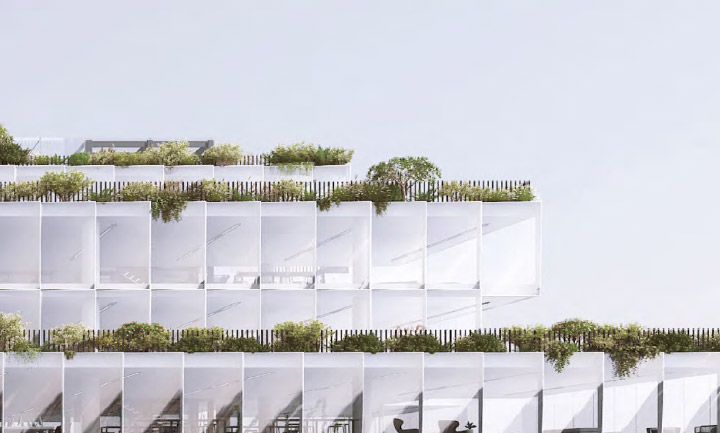It’s time for something new. What once worked when planning and designing spaces is no longer relevant in a changing world that demands consideration of our planet and our health. Innovation is essential as the ideals of wellness infiltrate adjacent industries.
We’re on the precipice of re-imagining antiquated ways of relating to one another and living in our spaces, moving away from a no-holds barred individualism and growth at all costs, instead to a community oriented and nature-inspired or nature-infused way of living. We’re making changes to the way we eat, travel, build, and consume, all in service of honoring our place on this magnificent planet and creating more holistic opportunities for all to experience a well lived life.
In addition to a heightened awareness of how we take care of ourselves individually, there has also grown to be more of a consideration of the collective. In mapping out returning to shared spaces and as a consequence of the global pandemic, we have realized the importance of building not just for one, but for the benefit of all. These considerations have included the focus of how healthy a building is. Given that the modern individual spends much of their time indoors, it makes sense that a more refined approach to how and what we build for our surroundings facilitates a greater well-being for all who encounter the space. With buildings being one of the largest and longest-term assets, a reliance and responsibility lives in those who make plans for the space – architects, designers, engineers, consultants, builders, and managers.
Ensuring the vitality and health of a space is inching closer to an expectation rather than an exclusive request, as more information, guidelines, and services become available. This includes LEED Building certification and WELL buildings, which are various types of organizations whose intent is to promote and certify standards of wellness architecture. Wellness architecture puts human health, wellbeing and comfort as key design considerations that augment a foundation rooted in sustainable and regenerative design practices. This is often implemented in tandem with green architecture, practices that seek to minimize negative environmental impacts by conserving energy and minimizing carbon footprint, as well as sustainable architecture, which seeks to maintain the current state of the environment and earth’s natural resources, employing moderation and ecological conservation in the design of the built environment.
Companies prioritizing health and well-being indoors employ a wide range of solutions to meet their goals of offering innovative and positive environments, including ambient scent. Since a pleasant scent has been proven to increase overall satisfaction and happiness of those who encounter it in the right environment, scent has been utilized to foster a healthier building space both for the health of the air quality and for the mental well-being of its occupants.
Ambient scent diffusion produces a fine particle dry micro mist at a subtle level that creates a pleasantly scented atmosphere without negatively altering the air quality or ventilation of a space. All of Air Aroma’s fragrances comply with the International Fragrance Association and Research Institute for Fragrance Materials / ICH & OECD guidelines. We offer a wide range of scent options, including essential oil blends for aromatherapy and safe synthetic scents for ambient scent diffusion. Sustainability is prioritized in following strict guidelines to avoid endangered or volatile specific natural plant materials as well as following strict safety guidelines to only manufacture blends suitable for scent diffusion.
With over two decades of experience in scenting spaces all around the world, you can trust Air Aroma to provide safe and tailored scent experiences. Maybe you’re familiar with the components of a healthy building including good ventilation and air quality, a comfortable temperature, low noise levels, and natural light. Why not also consider the scent of the space?
